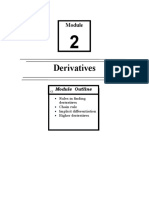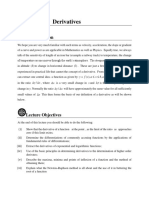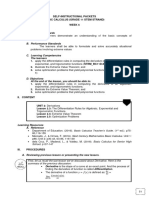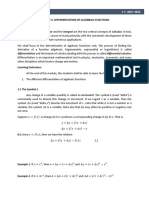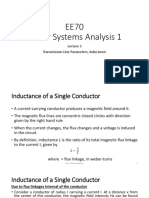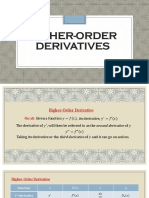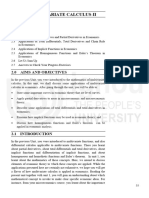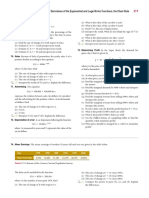0% found this document useful (0 votes)
122 views14 pagesLecture 3 Differentiation Rules-Formulas
1. The document discusses differentiation rules and formulas for elementary algebraic functions including:
- Derivative of a constant is zero
- Derivative of a sum is the sum of the derivatives
- Derivative of a product uses the product rule
- Derivative of a quotient uses the quotient rule
2. It also covers the chain rule, power rule, implicit differentiation, and higher order derivatives. Examples are provided to demonstrate each concept.
3. The key formulas are derived through proofs using the definition of the derivative. Special cases and applications like finding slopes of curves are also discussed.
Uploaded by
Lor JanCopyright
© © All Rights Reserved
We take content rights seriously. If you suspect this is your content, claim it here.
Available Formats
Download as DOCX, PDF, TXT or read online on Scribd
0% found this document useful (0 votes)
122 views14 pagesLecture 3 Differentiation Rules-Formulas
1. The document discusses differentiation rules and formulas for elementary algebraic functions including:
- Derivative of a constant is zero
- Derivative of a sum is the sum of the derivatives
- Derivative of a product uses the product rule
- Derivative of a quotient uses the quotient rule
2. It also covers the chain rule, power rule, implicit differentiation, and higher order derivatives. Examples are provided to demonstrate each concept.
3. The key formulas are derived through proofs using the definition of the derivative. Special cases and applications like finding slopes of curves are also discussed.
Uploaded by
Lor JanCopyright
© © All Rights Reserved
We take content rights seriously. If you suspect this is your content, claim it here.
Available Formats
Download as DOCX, PDF, TXT or read online on Scribd
/ 14





